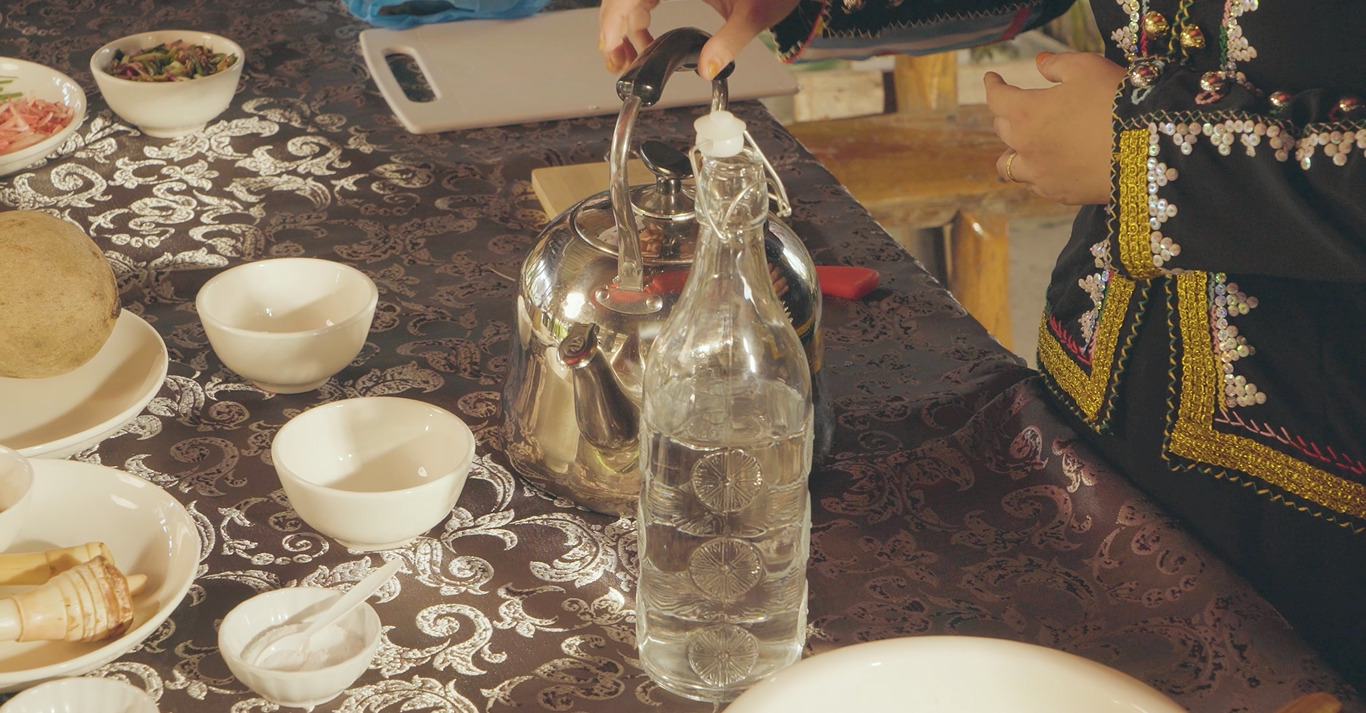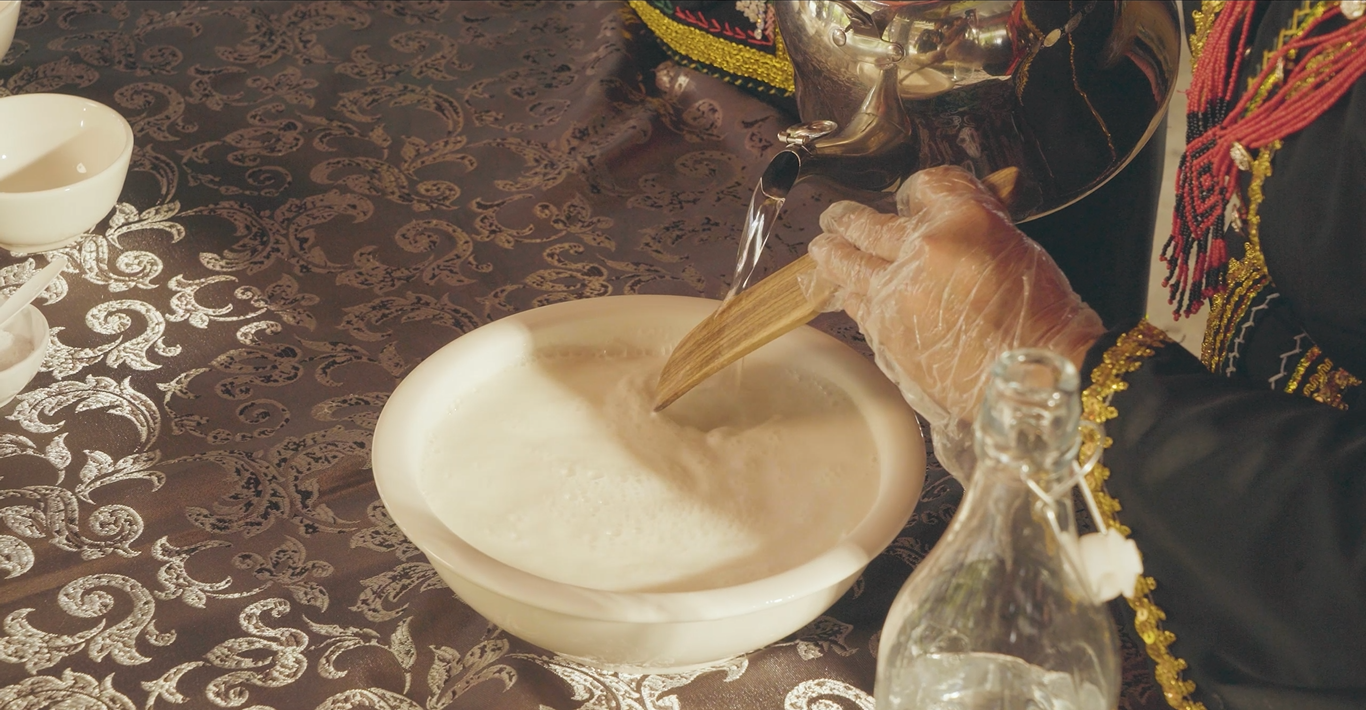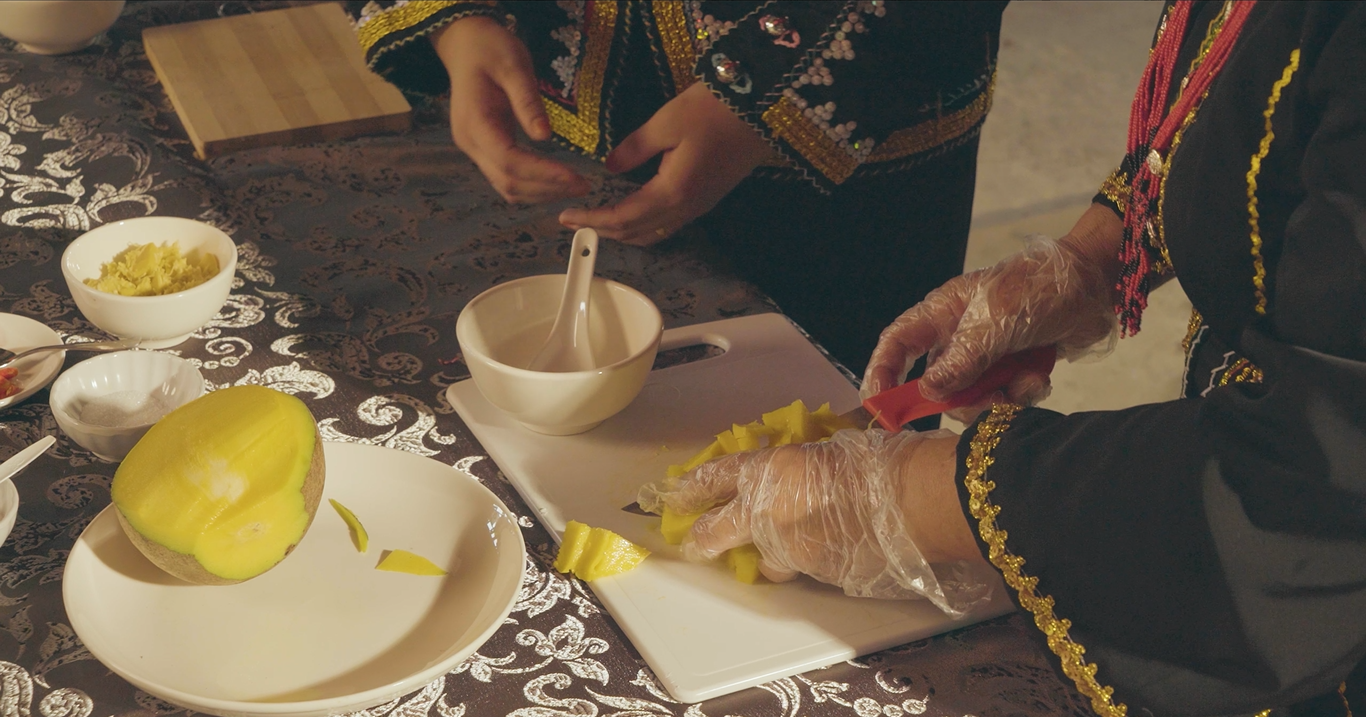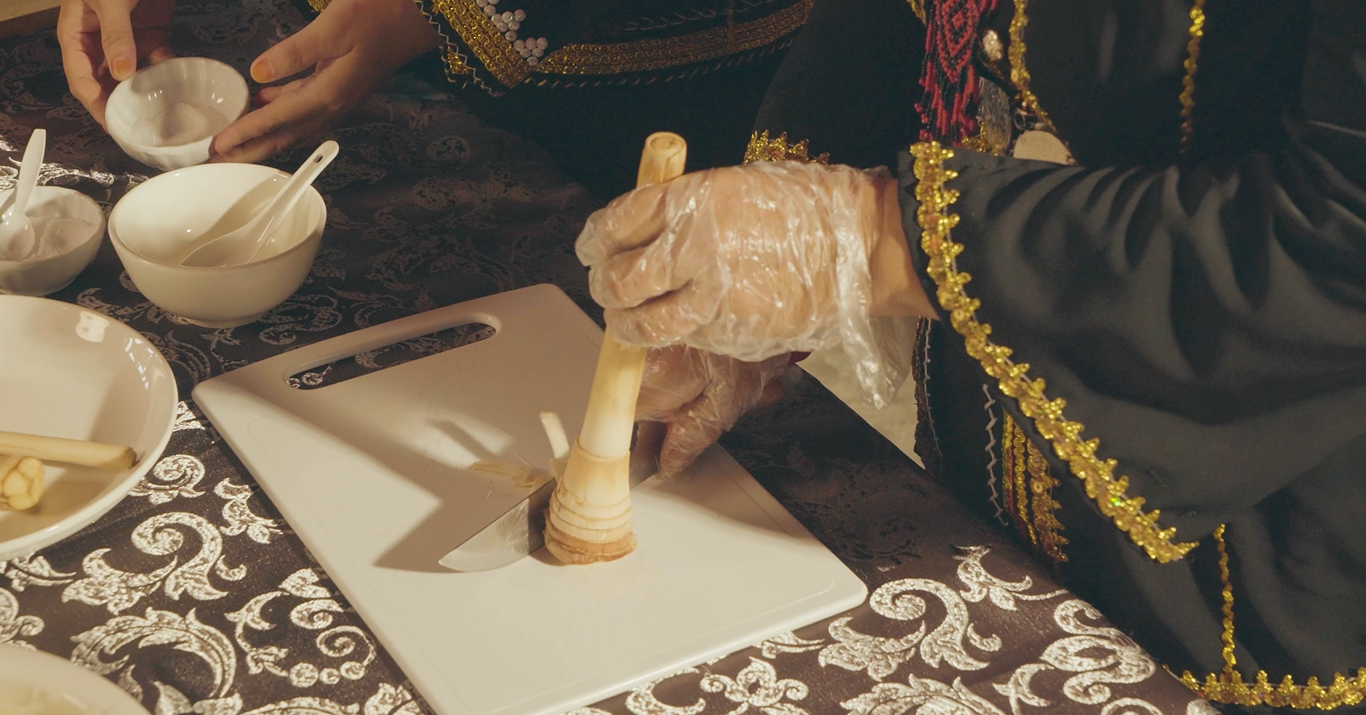ARTS AND CULTURE INFORMATION GATEWAY
Immerse yourself in the colorful world of art and culture! From traditional heritage to contemporary works, discover uniqueness that reflects the nation's identity and identity
MASAKAN TRADISIONAL ‘AMBUYAT’
Picture
14
Video
Available
Today's Visitor
68
Number of Visitors
1246
Introduction and history
Ambuyat is a traditional food, a favourite of the Bruneians and Bisayas. This special dish is enjoyed by many and has been passed down for generations by the Kadazandusun, Murut, Bajau and Dusun Tatana in Sabah.
Starchy food, transparent and sticky glue-like texture, it is made from sago flour, which is processed from sago palm wood, the ampulung.
In the old days, ambuyat was eaten daily, and always served at weddings, festivals and other celebrations.
- 1 kg (6 cups) of sago flour
- Hot water
- 1 litre (4 cups) of water
1. Mix the sago flour with four cups of water. Set it for ten minutes.
2. After ten minutes, remove the water and pour the sago into a heat-resistant container.
3. Stir the sago in boiling water until it looks like glue.
4. Another way to cook faster is to mix the sago flour with water, cook on a pan with medium fire and stir until it turns sticky and clear.
i) Kitsam Binti Jensit
ii) Judeth John Baptist
Reference Source
i. PUAN RITA TATI
ii. PUAN KITSAM BINTI JENSIT
iii. PUAN JUDETH JOHN BAPTIST
iv. Yakin, H. S. M., Moi, C. T., Totu, A., Sintang, S., Houi, Y. O. B., & Lukin, S. A. (2020). Impak modenisasi dan pengkomersilan terhadap keaslian makanan tradisi dan identiti budaya etnik Kadazan-Dusun di Sabah. Borneo International Journal eISSN 2636-9826, 2(4), 37-46.
v. Darif, I. L. M., & Majid, I. (2017). Ambuyat menu tradisi Borneo.
vi. Razali, M. N., Moung, E. G., Yahya, F., Hou, C. J., Hanapi, R., Mohamed, R., & Hashem, I. A. T. (2021). Indigenous food recognition model based on various convolutional neural network architectures for gastronomic tourism business analytics. Information, 12(8), 322.
vii. Bungsu¹, S. H., & Jusilin, H. Nilai Budaya Dalam Pembuatan Kuih-Muih Tradisional Etnik Brunei Di Sabah.
viii. Qonitahs, M., Salsabila, Y., & Perhotelan, F. P. D. PENGOLAHAN DAN PENYAJIAN MAKANAN NEGARA MALAYSIA.
Haji, S. S. S. I. M. Menelusuri Kearifan Tempatan: Kuih Tradisional Etnik Brunei di.
Location
State JKKN Contact Information
Puan Nurshahrinna Syahrial
Cultural Officer
Jabatan Kebudayaan dan Kesenian Negara, Sabah
Kompleks JKKN Sabah,
Jalan Tasik off KM4 Jalan Penampang,
88200 Kota Kinabalu
SABAH
088-205070
Use the form below to contact the Informant/Figure/Editor/Researcher directly. We will respond to your inquiry as soon as possible!

 Koisaan Cultural Village (KCV), Hongkod Koisaan (KDCA), KM8, Jln Penampang, P.o. Box 408, 89509 Penampang.
Koisaan Cultural Village (KCV), Hongkod Koisaan (KDCA), KM8, Jln Penampang, P.o. Box 408, 89509 Penampang.

















